It hasn’t always been a rosy picture for the forecourt stores sector, with numbers dropping off a cliff over the past few years, but the Experian Catalist market report for 2013 showed that this was the first year since 1966 that numbers had increased. And although 26 sites may not seem like that the glory days have returned, it is positive news for the industry that has seen site numbers drop from 13,107 in 2000 to 8,616 in 2013.
As well as improving numbers, the sector has been on an upward trend when it comes to standards. No longer seen as somewhere that customers will pick up a solitary chocolate bar in addition to their fuel, forecourt operators have been investing in their sites, with the result that stores are now being visited by customers on foot as well as by car.
David Charman of Spar Parkfoot in Kent knows what it takes to make a forecourt look special. Winner of this year’s Convenience Retailer of the Year Award, David has ploughed a significant amount of money into extending his store and introducing quality local suppliers to create a food market feel. He believes it has been worth every penny to make the transformation into a credible c-store operation.
He says: “Our future was never going to be just forecourt retailing; our future is our location and space and we’ve been steadily moving towards a convenience store offering that happens to sell fuel.”
He believes more forecourt operators should be making the move into c-store retailing on a serious scale. “Every site is different, as is every business, but I sometimes see opportunities at sites that are not being utilised, which is a shame. The market has evolved and transient sites just don’t cut it anymore, as customers expect more from forecourts.”
The change in shopping habits
While forecourt retailers are looking to up their game, what do shoppers think of the evolution of the industry, and how has the forecourt customer changed? As part of its Forecourt Tracking Programme, HIM interviewed 4,200 forecourt shoppers to discover what drives them.
Most tellingly, the survey found that just 26% of symbol forecourt customers are buying only fuel.
HIM senior research manager Blake Gladman says changing lifestyles means that shoppers are going to forecourts for more than just fuel. “Increasingly developed shopping habits and an ever-demanding need for convenient and relevant solutions to fit in with the working week has led to a blurring of channels on the high street, such as discounters stepping into convenience and supermarkets becoming food-to-go outlets,” he says. “This can be seen on the forecourts, too. Fewer shoppers are visiting petrol stations for fuel only. This is being driven by a change in fuel consumption habits, but also by demand for food and drinks to go.”
One area that has seen the benefits of such changes is food to go, with HIM research showing that one in three shoppers at a managed forecourt (33%) are on a food-to-go mission.
But with increased development of shopping habits come increased expectations of quality, value and service, says Gladman. “These key elements are no more relevant than within the food-to-go category. With such competition on the high street for this sector, these factors are no longer a ‘nice to have’ in the forecourts of the future, but a necessity in order to drive credibility and trust from shoppers.”
As always, there is room for growth and Gladman believes that even a small increase in top-up shopping could be beneficial to forecourt retailers. “A 1% increase in shoppers on a top-up mission to UK forecourts could represent an incremental £43m-worth of sales.”
David isn’t the only forecourt operator to have upped his game, however. Adam Hogwood, manager of Morrison’s Budgens of Broadstairs in Kent, wanted to change people’s perceptions of what a forecourt should be and realised there was potential in the area to do just that.
Adam decided to exploit the area’s ‘foodie’ credentials and dearth of local goods and set out to show that fuel and good food could go well together. So, in among the window washing fluid and spare bulbs, customers can now find local ales, cakes, rapeseed oil and crisps.
“We work with some very proactive suppliers who help us sell their products better,” he says. “We wanted customers to see us as a good store that happened to sell petrol, rather than a forecourt with a shop.”
David says his move into convenience has been a gradual one. “About 12 years ago, we wanted to move into the areas that people associated with convenience so we set about differentiating ourselves,” he explains.
“We took off the oil company branding and put up our own logo. We also created proper demarcations between the forecourt and the store. One way of doing this is to have the canopy separate from the entrance of the store building to create a different space.”
Nick Baker, a Jet retailer who runs five sites in the Doncaster area, also saw success when he changed the look of his sites. With two of his sites currently trading as Costcutter stores and the others as Mace, he says the branding has added another dimension to his offering. “When people see a symbol group sign they know there will be a level of quality associated with that group, not matter what type of site it is,” he says. “Costcutter was the way forward for the larger stores, especially given the range that my customers now expect me to have.”
He points out that there’s no longer one type of forecourt shopper. “Customers have evolved and will buy more than just fuel and a snack; they’re buying their meal for that night, or products for the next morning,” says Nick. “They need a better range with more options and expect you to have it.”
Some of the Nick’s changes include introducing franchise food-to-go options such as Subway, which has a proved a great success. “When it was introduced it attracted a lot of customers and generated a lot of business for the store - a lot more than if I had put an unknown food-to-go offering in there.”
Improving the store’s fresh offering has also been key. “It needs to be there as soon as the customer walks in the door,” says Nick. “Shoppers are busy and want to be able to get everything they can at one place.”
David and Adam agree that the fresh and chilled category should be the first one to get right. “Getting your fresh offering right is tough, but it’s where customers will begin trusting you,” says David. “It’s important that it’s done properly.”
Fresh start
In order to get fresh right at his site, Adam made the decision to move the categories that people associate with fuel retailers away from the front of the store. Instead of cold cans and sandwiches to greet the customers, Adam moved the more visually striking fruit and vegetable category nearer the door. The brave move has paid off as sales of fresh foods have trebled since the change.
David went a step further. As well as a fresh fruit and vegetable offering, he installed a butchers counter to give his store a point of difference. “You want customers to feel the impact as soon as they walk through the door, and when they see the butchers counter they know the store is something special.”
The opportunity is there
Christie + Co director and head of retail Steve Rodell says that the forecourt sector could be the perfect move for a retailer looking to grow their estate.
He says that the lines between channels are blurring, and customers want to be able to get everything they need from one site.
“It’s the nature of the beast that customers are lazy and want to pull up in their car, get their stuff and drive away, instead of having to go to another shop around the corner. This is being recognised by the better retailers in the sector.”
He believes there is great opportunity for retailers looking to join the forecourt sector. “The oil companies are still on disposal programmes,” says Rodell. “This means that there is a huge opportunity for independent retailers to buy up these sites, and there are some really good sites out there.”
Rodell adds that to be a success, though, retailers need to alter shoppers’ perceptions. “It’s easy for a consumer to drive up to a forecourt and say ‘I’m not going to buy my apples and pears there because it’s a forecourt’ so retailers have to present their ranges properly. Retailers are introducing more fresh, but are doing it properly to make an impact.”
He says it’s the little things that ensure customers treat a forecourt store like any other. “You need to be in there everyday looking at your customers, getting to know them,” says David. “More than 90% of our customer base are regulars so we have a good idea about what they want on a daily basis. It’s also details such as making sure that baskets and trollies are available, as that’s what customers expect. They don’t want to be juggling items as they walk round; you want them to be filling a basket or trolley with products.”
While retailers may be realising the potential of forecourt retailing, they may also underestimate the difficulties of moving into the world of petrol pumps, finding that the fuel side of the business needs as much care and attention as the grocery side.
When the Cheema family bought a forecourt site earlier this year, they were forced to learn quickly about the fuel industry. They acquired the site in Tile Hill, Coventry, last December and, following a rebrand to the Malcolm’s fascia and a mini refit, the store has gone from strength to strength.
“When we took over, the store was trading at about £14,000 a week. We’re now up to £27,000 thanks to changing around the store and adding more fresh,” says Paul Cheema. “We opened up the front of the store and installed a food-to-go offering to get people engaged.”
But he admits that the fuel side of the business has been an interesting learning process and urges any retailers considering moving into the forecourt arena to surround themselves with those who know the industry.
“There’s a lot of learning to be done in fuel retailing, but thankfully we kept the previous site manager on and they’ve been keeping that side running while we’re getting up to speed,” says Paul.
“The staff have been vital to the smooth running of the overall site, and the previous owner made himself available to us so they’re only a phone call away. It’s not something that you’ll learn about straight away so it’s important to have people in place who know the sector and its processes.”
Even though they’ve been running the store for only eight months, the family has noted a change in customer behaviour. “People are walking to the shop rather than driving, and doing weekly shops rather than just topping up,” says Paul. “It’s been a success so far and we’re already looking at other forecourt sites.”
With quality retailers such as the Cheemas and David Charman in the driving seat, the forecourt sector looks like it’s all set for a successful future.















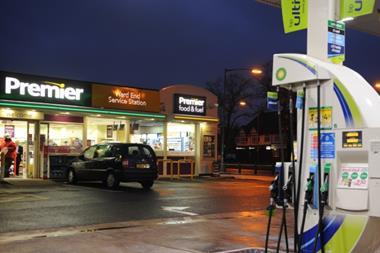
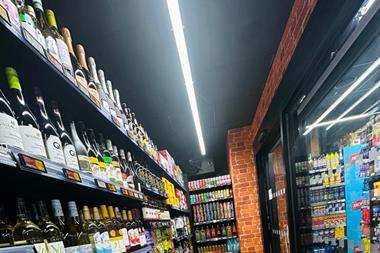
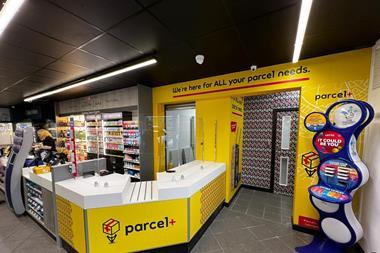

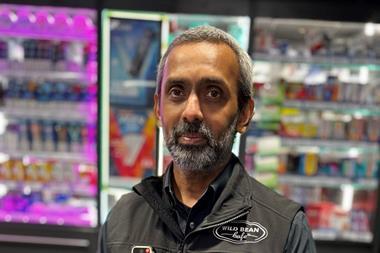
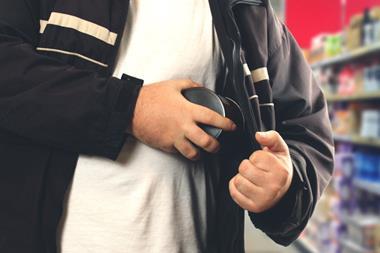

No comments yet